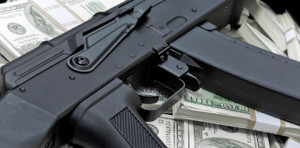 Introduction
Introduction
Iran’s leaders have over the years repeatedly denied allegations that they support terrorism or intend to develop nuclear weapons. But the international community remains unconvinced. The US State Department has listed the country as a ‘State Sponsor of Terrorism’ since 1984 and the United Nations (UN), the European Union (EU), the United States (US) and other countries have all imposed a growing list of sanctions against Iran. There are concerns that if Iran spends billions of its limited resources today to support its proxies in the Middle East, it will spend even more once sanctions are lifted as part of a nuclear deal.
Iran is reportedly arming and supporting Hezbollah in Lebanon, Hamas and the Islamic Jihad in Gaza, the Syrian regime forces and militias, the Houthi rebels in Yemen, and a range of Shia militias in Iraq, Bahrain, Pakistan, Afghanistan and elsewhere.1
A key role in this support is played by Iran’s military, the paramilitary Revolutionary Guards Corps (IRGC) and its elite Qods Force, as well as its key proxy Hezbollah Lebanon. At the same time, Iran has pursued a nuclear programme for many years, which is seen by the international community not only as an alternative source for the growing energy needs of the country, but also intended to develop nuclear weapons.
This study focuses on some of the conflicts in the Middle East in which Iran is reportedly involved.
The specific objectives of this research are to:
- Provide an estimate of the Iranian financing of:
- Hezbollah in Lebanon (since 1983);
- Shia militias in Iraq (since 2003);
- Hamas and the Islamic Jihad in the Gaza Strip (since 2007);
- the Houthi rebels in Yemen (since 2010);
- the Assad regime forces and militias in Syria (since 2011).
- Provide an overview of economic and political sanctions against Iran;
- Provide an estimate of the impact of the nuclear programme and the related sanctions on the Iranian economy and to briefly lay out arguments for an alternative energy scenario.
The support to foreign paramilitary groups and with this increasing influence in the region on the one hand, and the nuclear programme on the other hand, are both crucial factors in achieving Iran’s geo-strategical goals in the Middle East and creating lines of defence against its opponents, namely Saudi Arabia, Israel and the US.2
This research focuses on a narrow set of questions and does not provide background information or detailed historical contexts on the conflicts in question.
Notes & References
1. Byman, D. (2015, February 11), State Sponsor of Terror: The Global Threat of Iran, Testimony to the House Committee on Foreign Affairs – Subcommittee on Terrorism, Nonproliferation, and Trade, p.2.
2. Bender, J. (2015, June 18), “Iran is turning Israel and Saudi Arabia into allies”, Business Insider UK, online: http://uk.businessinsider.com/iranian-nuclear-deal-uniting-israel-and-saudi-arabia-2015-6?r=US&IR=T, accessed in October 2015; Naylor, S.D. (2015, July 20), “Will Curbing Iran’s Nuclear Threat Boost Its Proxies?”, Foreign Policy, online: http://foreignpolicy.com/2015/07/20/will-curbing-irans-nuclear-threat-boost-its-proxies/, accessed in October 2015.
 English
English  فارسی
فارسی  العربية
العربية